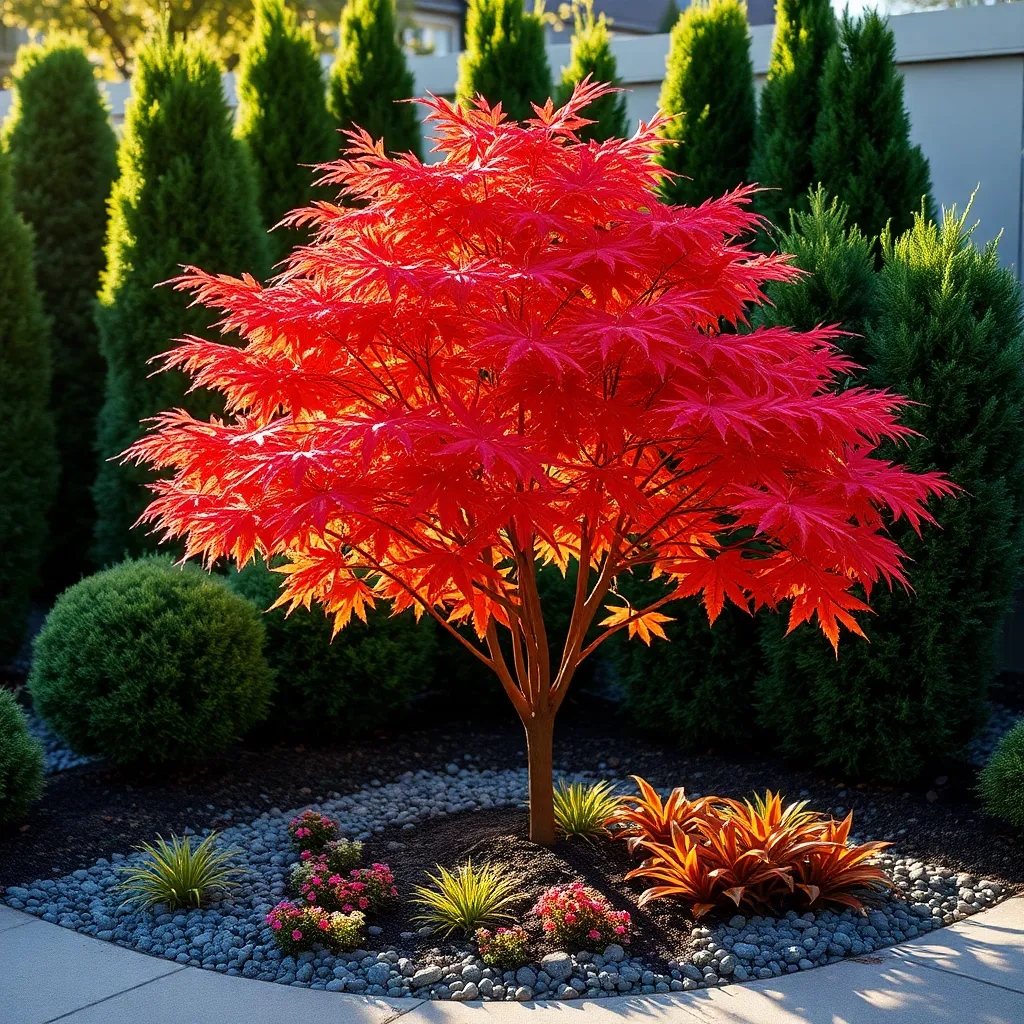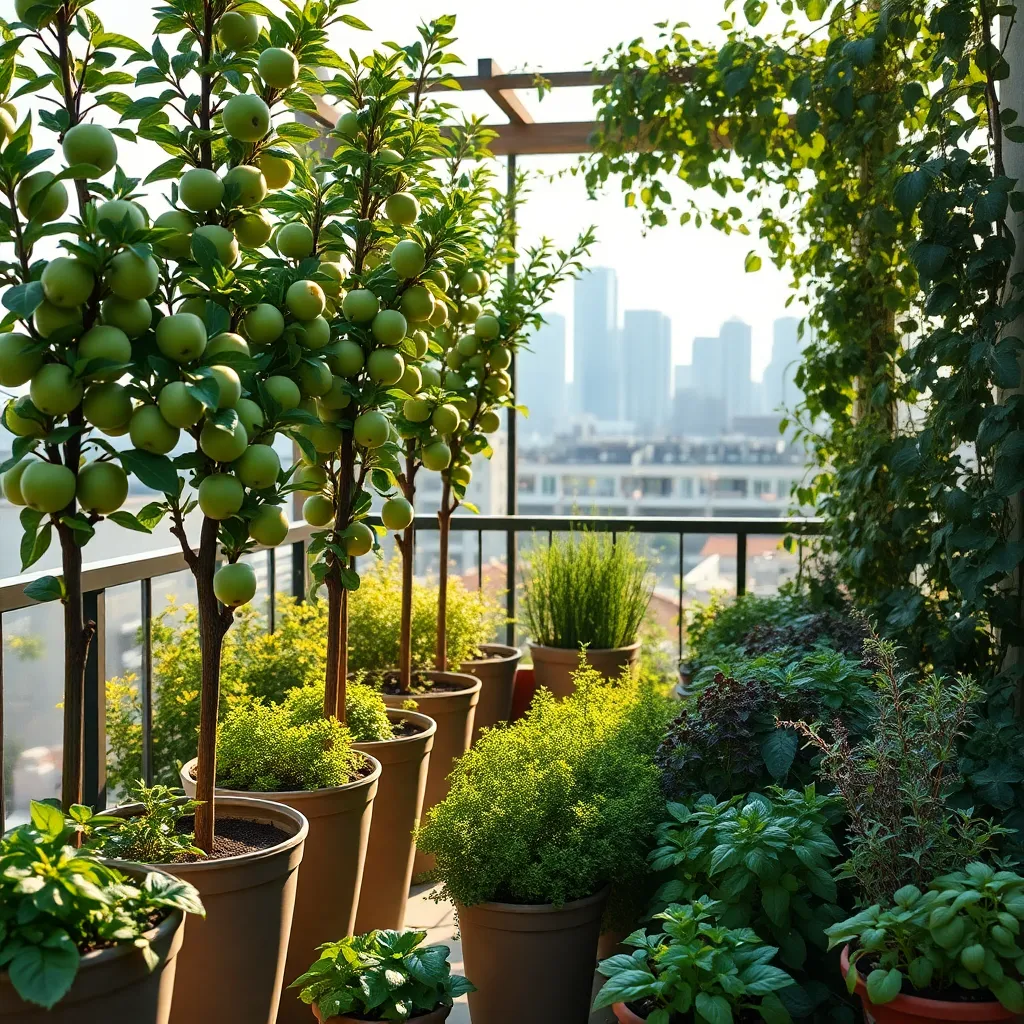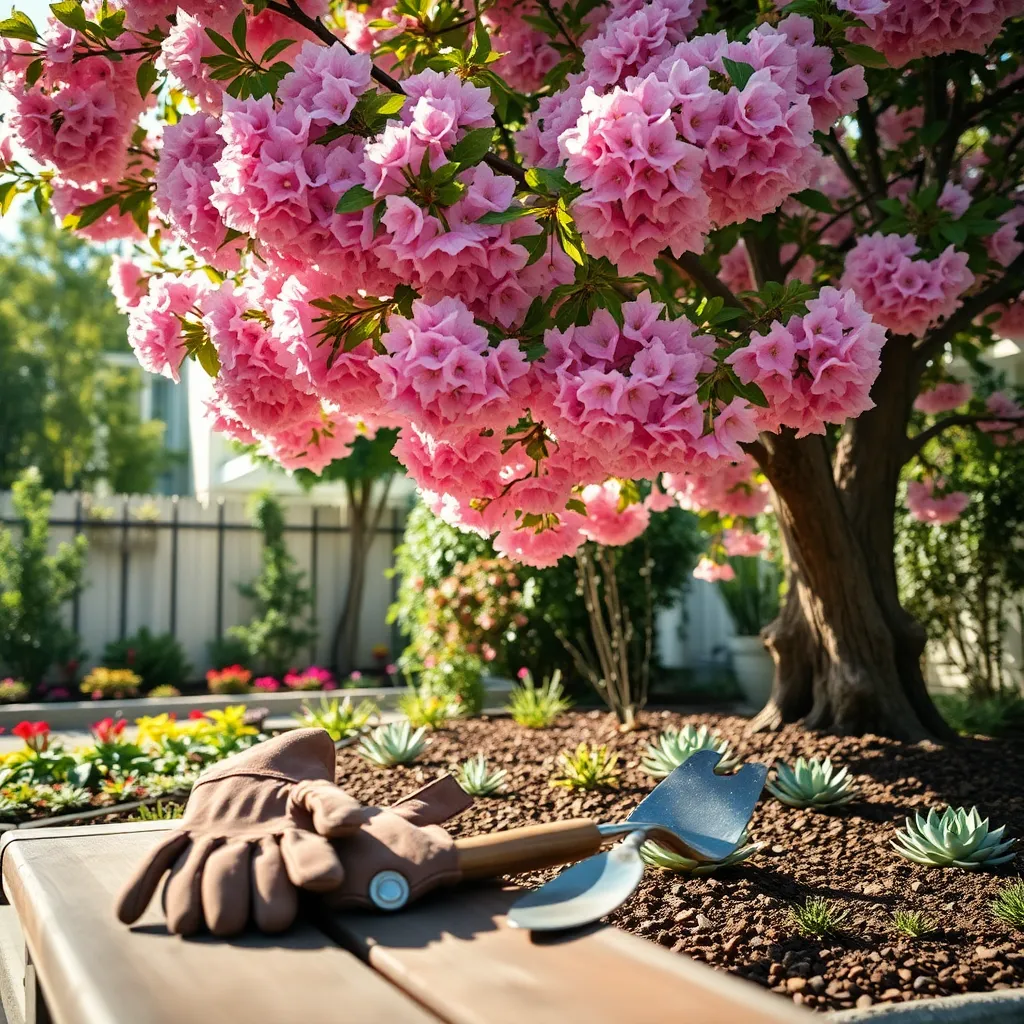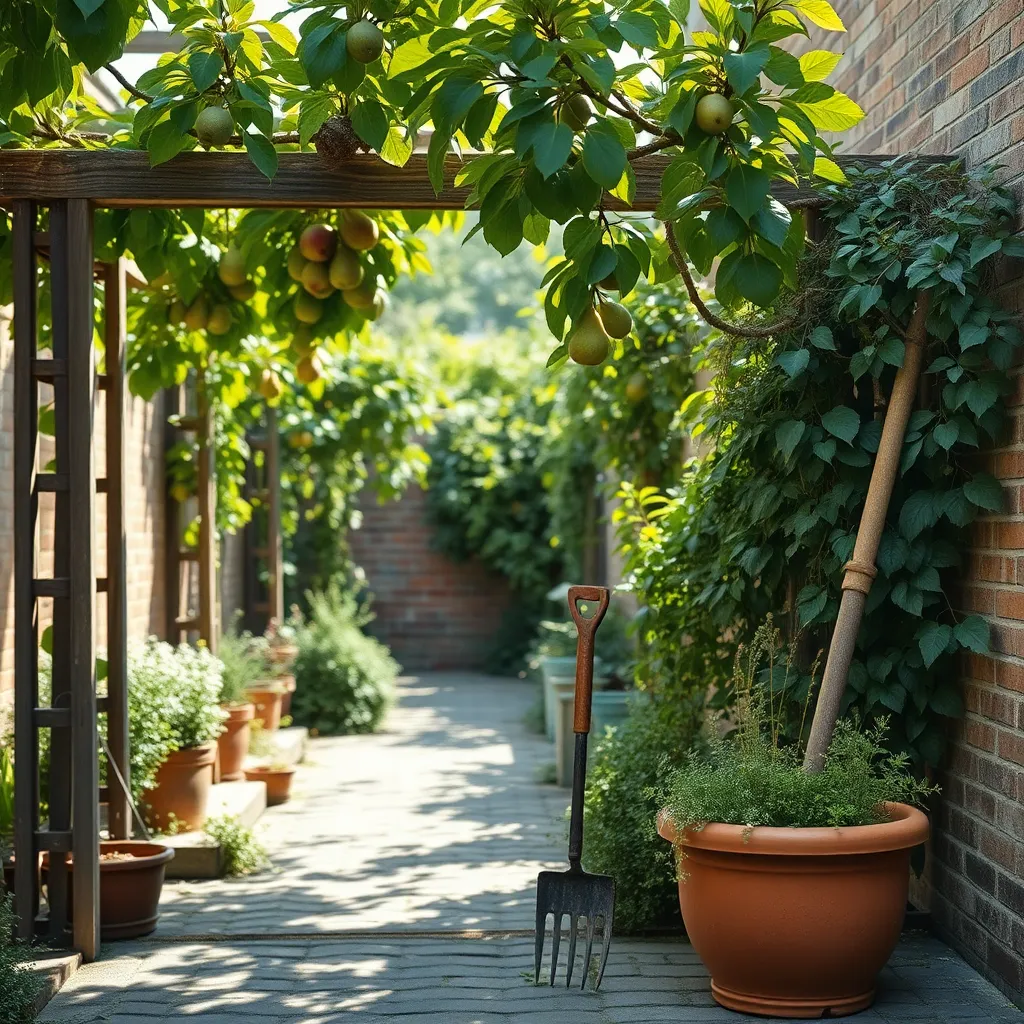Imagine transforming your urban oasis into a lush, green sanctuary where the air feels fresher and the surroundings invite tranquility. Whether you’re just starting your gardening journey or are a seasoned cultivator of verdant spaces, choosing the right trees can revolutionize your small garden into a thriving retreat. In “Best Trees for Urban Gardens,” we explore a curated selection of trees that promise to enhance your space while fitting seamlessly into city living.
This guide is packed with practical insights that cater to the unique challenges of urban gardening, from limited space to varying light conditions. Readers will discover trees that not only beautify their gardens but also offer shade, improve air quality, and provide a habitat for urban wildlife. With our expert advice, you’ll feel confident in selecting and nurturing trees that meet your garden’s needs, turning your concrete corner into a vibrant testament to the joys of successful gardening.
Japanese Maple (Compact and Colorful Foliage)

Japanese Maples are an excellent choice for urban gardens due to their compact size and stunning foliage. These trees thrive in small spaces, making them perfect for patios, balconies, or small yards.
To ensure healthy growth, plant your Japanese Maple in well-draining soil with a slightly acidic pH. It’s best to position them in a spot with morning sun and afternoon shade to protect their delicate leaves from scorching.
Water these trees regularly, especially during dry spells, maintaining a consistent moisture level without waterlogging the roots. Mulching around the base can help retain moisture and provide extra nutrients as it breaks down.
For more advanced care, consider annual pruning in late winter to maintain the desired shape and encourage new growth. Additionally, applying a balanced, slow-release fertilizer in early spring can enhance both foliage color and overall vitality.
Columnar Apple Trees (Fruit-Bearing and Space-Saving)

Columnar apple trees are a fantastic choice for urban gardens due to their slender, upright growth habit. These trees can thrive in small spaces, making them ideal for balconies or tight corners of a garden.
To grow a healthy columnar apple tree, plant it in a location that receives at least six hours of sunlight daily. Use well-draining soil that is slightly acidic to neutral, aiming for a pH of 6.0 to 7.0.
Regular watering is crucial, especially during the first few years, to establish a strong root system. Water deeply once a week, allowing the soil to dry slightly between sessions to prevent root rot.
For optimal fruit production, consider planting more than one variety to ensure cross-pollination. Select varieties that are disease-resistant and suitable for your climate, and enjoy the rewards of fresh, homegrown apples right from your urban garden.
Crepe Myrtle (Heat-Resistant and Low Maintenance)

Crepe Myrtle is an excellent choice for urban gardens due to its heat-resistant and low maintenance nature. This tree thrives in full sun, requiring at least six hours of direct sunlight daily to produce its vibrant blooms.
When planting Crepe Myrtle, it’s important to choose well-draining soil to prevent root rot. A sandy loam is ideal, but these adaptable trees can tolerate a range of soil types if drainage is adequate.
Watering needs are minimal once the tree is established; a deep watering every 7-10 days during dry spells is sufficient. To encourage strong growth and blooms, apply a balanced fertilizer in early spring as the tree begins to leaf out.
For best results, prune your Crepe Myrtle in late winter to remove any dead or crossing branches, which helps maintain an open shape and promotes air circulation. Advanced gardeners can experiment with different pruning techniques to enhance the tree’s natural sculptural form.
Dwarf Blue Spruce (Evergreen and Urban-Friendly)

The Dwarf Blue Spruce is an excellent choice for urban gardens, offering both beauty and practicality. Its compact size and dense, blue-green foliage make it an ideal option for small spaces or as a focal point in larger gardens.
When planting a Dwarf Blue Spruce, it’s crucial to select a location with full sun exposure. This tree thrives in well-draining soil, so consider mixing in sand or gravel if your garden has heavy clay or poor drainage.
Regular watering is essential, especially during the first few years after planting when the tree is establishing its root system. However, be careful not to overwater as this evergreen prefers slightly drier conditions once established.
For those looking to enhance their gardening skills, consider mulching around the base of the tree to retain moisture and suppress weeds. Pruning is rarely necessary, but if needed, it’s best done in late winter or early spring to maintain its shape and health.
Espalier Fruit Trees (Vertical Growth for Tight Spaces)

Espalier fruit trees offer a creative solution for urban gardeners with limited space. By training trees to grow flat against a wall or trellis, you can enjoy fresh fruit without needing a large yard.
This technique involves careful pruning and support to achieve the desired shape. Start with young, flexible branches that can be easily manipulated into a horizontal or fan pattern.
Choose fruit tree varieties that respond well to espalier, such as apples, pears, or figs. These trees not only adapt well to vertical growth but also produce abundant fruit when properly maintained.
For optimal growth, plant your espalier tree in a location that receives full sun and has well-draining soil. Regular watering is essential, especially during the growing season, to ensure the roots stay moist but not waterlogged.
Begin by installing a sturdy support structure, such as a wire frame or a wooden trellis, to guide and secure the branches as they grow. Prune the tree twice a year—once in late winter and again in summer—to maintain its shape and encourage fruit production.
Advanced gardeners can experiment with different espalier designs, such as the candelabra or Belgian fence, to add an aesthetic touch to their garden. With patience and regular care, espalier trees can become a beautiful and productive feature in any urban garden.
Conclusion: Growing Success with These Plants
In exploring the vibrant possibilities for urban gardens, we uncovered five relationship concepts essential for nurturing greenery in tight spaces. First, we discussed the importance of compatibility between tree species and urban environments, ensuring that chosen trees thrive without overwhelming their surroundings. Next, we emphasized the necessity of communication, highlighting how understanding tree growth patterns can prevent conflicts with infrastructure. We also touched on adaptability, showcasing trees that flourish despite urban challenges. Preservation of harmony was another key point, where we explored how the right tree choices can enhance community spaces. Lastly, we celebrated the joy of shared growth, fostering connections through communal gardening efforts.
To bring these concepts to life, why not start by visiting a local nursery or garden center to explore urban-friendly trees? This small step can lead to a flourishing green space that enhances your community and personal well-being.
As you embark on this green journey, save this article for easy reference and inspiration. Bookmark it now to ensure that your urban gardening efforts are grounded in sound relationship principles. Remember, successful relationships, like thriving gardens, require patience, understanding, and a commitment to growth. Your urban oasis awaits—nurture it well!
